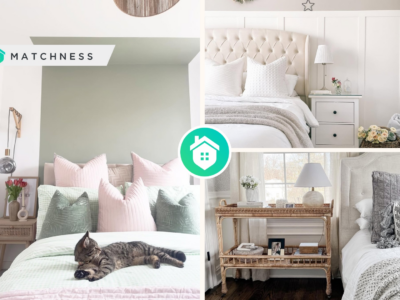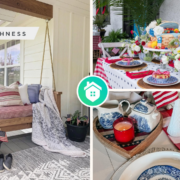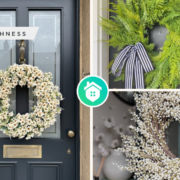Finding the right neighborhood is a big decision. You want to be sure it’s a good fit for you, but also that it won’t break your budget. For some people, a good area needs to have a walkability score higher than 70%, access to public transportation nearby, and plenty of restaurants within walking distance from home. Others value safe and clean neighborhoods with good schools.
No matter what kind of neighborhood fits best into your life plans and no matter what kind of budget constraints exist within those plans, there is a perfect neighborhood for you. So let’s break down some tips on how best to evaluate different communities before settling down as part of them!
1. Define Your Ideal Neighborhood
Now, this is not as easy as it sounds. Take some time and think about what will make your neighborhood ideal, and make sure to take the needs of the whole family into consideration.
Identify Your Priorities and Make a Wishlist
Sure, it’s all important: safety, amenities like parks and shops, transportation options, schools. However, an area that will check all of the boxes is very hard to come across. Therefore, you need to prioritize.
For families with children, having good schools and green areas nearby would be a deal breaker. For older couples, it would be proximity to amenities and easy access to public transportation. Sometimes, even having friends nearby who share similar interests plays a big role in the decision.
Your priorities should also depend on the location you’re considering. Say, if you were looking for a place in the UAE, here are some factors to note according to a real estate company in Dubai: low crime rates, high-end amenities, and various transportation options.
Set Your Search Filters
Once you’ve decided on your priorities for a neighborhood, it’s time to start looking for actual homes. The first step is setting your search filters so that only relevant listings will come up as potential homes for sale.
Setting these search filters is easy. You can filter your search to show only homes that match certain criteria, like gym availability and type of house. It can help narrow down your options just enough without overwhelming yourself with too many choices at once.
Keep Tabs on the Selected Areas
You can use Niche to find out more about different cities and neighborhoods and compare them. Those tools let you search for neighborhoods by criteria like cost of living, crime rates, education levels, and more. You can also use the Nextdoor app that let you know about news in your neighborhood area of interest.
2. Discover Hidden Gems
Some neighborhoods have a lot of charm, value, and character but aren’t as popular or well-known as other areas. These hidden gems may offer lower prices or better quality of life than other neighborhoods. They can also provide unique features that aren’t available in other areas.
Look for Signs of Potential
If you can see yourself living in a neighborhood, it’s the first sign that it’s for you. Look for signs of potential. Those signs that show there may be opportunities for growth or change in your new neighborhood include an influx of new businesses or homes being built or renovated. If you’re looking for an active community with lots going on like festivals, parades, and other events, check out nearby parks or public spaces that might host these types of activities.
Ask for Referrals
You should talk to your friends and relatives about the things they like in their neighborhood. Ask them if there is anything they would change if they moved again.
If possible, ask your real estate agent or another resident for referrals on good neighborhoods within your price range and lifestyle preferences. You can also explore online sources like Zillow, Redfin, or Trulia.
Explore Online or Offline Sources
Use Numbeo to check out the crime maps for each location first. While these are not infallible, they can give you an idea of how safe or dangerous a neighborhood might be.
Next, check out local blogs and news websites that will often report on relevant news in different parts of your city. If possible, try visiting some local community forums. People use Nextdoor to announce garage sales and community events, which could be a great opportunity to meet people living in the area and ask about their experience firsthand.
3. Evaluate and Compare Different Neighborhoods
Once you’ve narrowed down the list of potential neighborhoods, it’s time to evaluate them and compare them based on your priorities.
Visit in Person
If possible, visit the neighborhood during different times of the day (morning rush hour versus evening) or on different days (weekday versus weekend). If there are parks or other amenities nearby, this will give you an idea of whether they’re well-used and safe at these times.
Check out transportation options like bus stops, subway stations, and bike lanes so that you know how easy it is to get around safely in your potential neighborhood. Look at the pros and cons of each neighborhood and pick one that matches more with the priorities you outlined before.
Talk to Locals
To gain some insights, you can ask locals about what they like best in their neighborhood and how it’s compared to other parts of the city. You might also want to ask about any hidden gems that might not be on your radar yet — be it an amazing local business or service.
Read Reviews
Read reviews on websites like Yelp, TripAdvisor, or Google Maps from people who have been there. Look for common themes in the reviews, like complaints about noise or crime. If a neighborhood receives positive comments that mention specific things about the area, like parks or schools, it’s probably safe and family-friendly.
To Sum Up
Your safety, well-being, and happiness will depend on where you decide to settle. Tips and tricks provided here should be a great starting point in your pursuit of an ideal neighborhood.






















